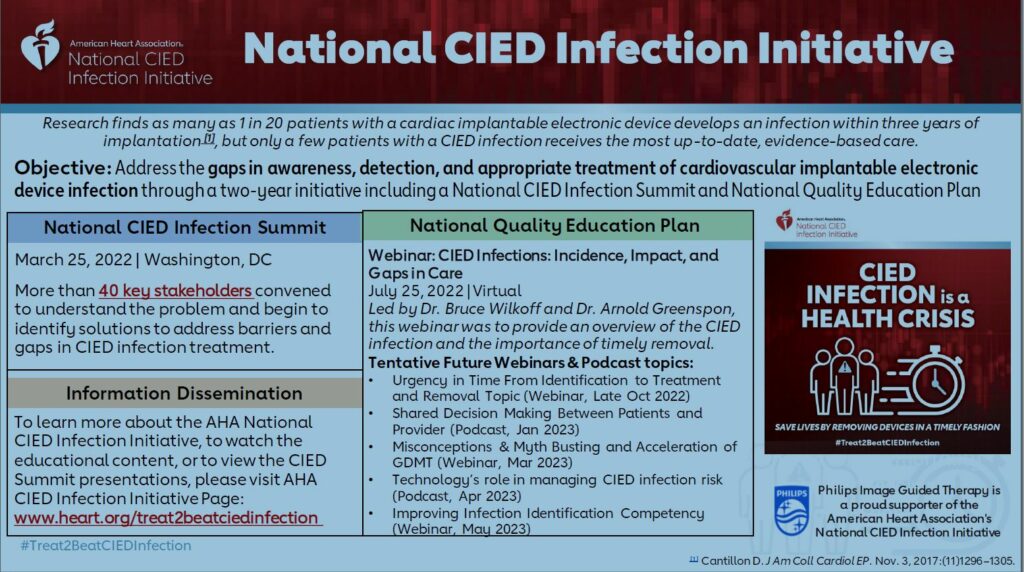New recommendations to bridge gaps in awareness, treatment of cardiac device infections
As many as 1 in 20 patients with a cardiac implantable electronic device (CIED) — such as a pacemaker or implantable defibrillator — develops an infection within three years of implantation, but many do not receive the most up-to-date, evidence-based care.1,2 A new report from the American Heart Association’s National CIED Infection Initiative aims to change that.
The report incorporates best practices from a summit of key opinion leaders, stakeholders, medical societies, patient groups and other system of care participants convened by the American Heart Association, a global force for healthier lives for all. The summit report recommends:
- using a patient tool to track symptoms, including photography and device identification,
- defining a center of excellence for CIED care,
- developing a care pathway that includes patient transfer infrastructure for non-extracting centers and improving extraction safety, and
- raising awareness about CIED infections via a patient education toolkit with a simple checklist for device assessment, information for device makers on risks and key messages to combat misconceptions about the risks associated with extraction.
Learn more about the National CIED Infection Initiative:
- National CIED Infection Initiative website – heart.org/treat2beatciedinfection
- Cardiovascular Implantable Electronic Device Infections: Incidence, Impact, and Gaps in Care VIDEO
- The 2022 National CIED Infection Initiative Summit
- Abstract 10348: Contemporary Management of Cardiac Implantable Electronic Device Infection: A Survey of American College of Cardiology Members and Primary Care Physicians (COGNITO Study), Ami Sood, Ulrika Birgersdotter-Green, Dhanunjaya Lakkireddy, Archana Rao and Paul Theriot, Originally published30 Oct 2022Circulation. 2022;146:A10348. View presentation from AHA.
- Podcast Series:
- Episode 1: Treating pacemakers and other implantable device infection: A shared decision
- Episode 2: Treating Pacemakers and Other Implantable Device Infections: Case Study Review and Implications
